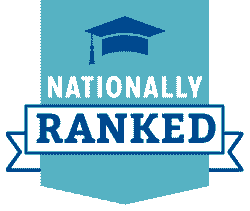Mobile Health (mHealth) Systems Lab
At mHealth Systems lab, we strive to make a difference in people’s lives via sound research via sound research.
Our current work (supported by NIH Center of Excellence for Mobile Sensor Data-to-Knowledge(MD2K)) seeks to define new frontiers in the newly emerging discipline of mobile health (mHealth). With support from the prestigious Genes Environment Initiative (GEI) at the National Institutes of Health (NIH), we developed the AutoSense wearable sensor system to continuously monitor physiology in the mobile environment. AutoSense is complemented by a software framework on the mobile phone called FieldStream (supported by the NetSE program at NSF) that collects physiological measurements from AutoSense sensors, processes them to make behavioral inferences, and uses these behavioral events to solicit self-reports on the phone, all in real-time. The entire end-to-end system has been worn by 100+ human volunteers (including daily smokers, drinkers, and drug users) for 10,000+ hours in their natural environments as part of various scientific user studies. From these real-life sensor measurements, we have developed robust models to automatically infer psychological stress, to detect conversation episodes, to detect smoking puffs, and detect cocaine use in field.
Near-term goal of our research is to scale physiological sensing to millions of people for years in the field, to lay a strong foundation for making robust and reliable inferences from noisy physiological measurements collected in the mobile environment, realize the vision of just-in-time interventions, and to address the challenging, yet vital, issue of privacy in mobile health. A new project EasySense (from NSF Smart Health) aims to scale physiological sensing by obviating the need to have skin contact. A new R01 from NIDA is supporting the monitoring of newly abstinent smokers with AutoSense to discover the vulnerable moments that may lead to lapse, automated detection of which may trigger a just-in-time intervention. A new project from NSF is supporting investigatation of novel mechanisms to preserve behavioral privacy in mobile health.
Our research involves more than twenty faculty members from ten universities (CMU, Georgia Tech, UCLA, UC Irvine, UMass Amherst, University of Minnesota, Ohio State University, Johns Hopkins, University of Pittsburgh, and NIDA Intramural Research). Our collaborators span a variety of disciplines (e.g., Computer Science, Electrical Engineering, Mathematics, Statistics, Psychology, Behavioral Science, Cardiology, Physiology, Public Health, etc.), making our projects highly transdisciplinary.
Our prior work led the foundation for coverage and connectivity in wireless sensor networks. We introduced two new models of coverage, Barrier Coverage (for intrusion detection) and Trap Coverage (for scalable tracking with provable guarantees). With our esteemed Mathematician colleagues (Bela Bollobas and Paul Balister), we introduced an analytical technique for deriving reliable estimates for probabilistic events, obviating the need to insist on large network size to make probabilistic guarantees (as is traditionally done in making "with high probability" claims). We applied this technique to derive reliable estimates of density to achieve barrier coverage, full coverage, connectivity, and trap coverage, demonstrating its wide applicability. Our work on trap coverage explained the entire continuum between percolation and full coverage.
In an earlier systems work, we developed the AutoWitness burglar tracking system to help law enforcement agencies in recovering stolen assets. AutoWitness can detect burglary without an explicit report from the owner, instantly notify law enforcement agency, and most importantly, provide real-time updates on the current location of assets while en-route, maximizing the chances of timely recovery.

